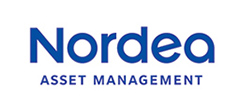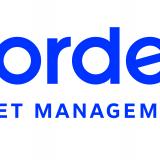
Unlocking the hidden value in heavy emitting companies
By Alexandra Christiansen, portfolio manager of Nordea 1 – Global Climate Engagement Fund
If the world is to be successful in transitioning to a sustainable economy, an enormous transformation needs to take place across many industries. New ecosystems are forming and innovative technologies are emerging; however, we are still at the beginning of this green transition. Many businesses have made only the first steps, resulting in significant uncertainty and scepticism as to how and if this transformation will be achieved. This is especially true of today’s heavy emitting industries, which are responsible for a large part of the global pollution problem.
Fifteen years ago Nordea Asset Management (NAM) became a pioneer of environmentally focused investing with our renowned Nordea 1 – Global Climate and Environment Fund – one of Europe’s largest SFDR Article 9 funds, investing in companies that offer innovative climate solutions.
Around the same time, NAM assembled what is now one of the most well established Responsible Investments Teams in Europe, including specialists in climate research and active ownership. Understanding the risks and opportunities arising from the transition to a green economy is an integral part of our fundamental analysis, and we believe that active ownership (including engagement and voting) is an effective tool in driving forward change, holding management teams accountable and alleviating investor scepticism.
Now, NAM is drawing upon the climate and engagement expertise we have developed to work with today’s heavier emitters and environmental polluters as they face an increasingly urgent need to change. This was an important reason behind the launch of Nordea 1 – Global Climate Engagement Fund last year, which focuses on engaging with selected heavy-emitting and environmentally polluting companies in order to drive real change. We call this climate investing 2.0.
The reality is that many of these companies will still be around in the low-carbon economy of the future, and some will play a crucial role in achieving important sustainability goals. Excluding them from portfolios may look good on paper, but will have a limited impact in the real world.
We believe a significant factor in unlocking value in these businesses is convincing the wider market of their improving sustainability and ability to generate positive returns in the future green economy.
This requires these businesses to make commitments with full transparency and backed by science, to which we can hold management teams accountable and measure progress. It also means demonstrating the viability of their sustainability plans in practice, backed by credible capital allocation.
Five engagement themes to lead businesses forward
In order to enact meaningful change through engagement, we focus on five areas. Unsurprisingly, one key consideration is greenhouse gas emissions, which are the leading driver of global warming.
As economic production requires substantial energy inputs, energy management is also paramount for successful climate action.
Water and waste management is another vital issue with the damage from environmental pollution posing risks of legal and regulatory interventions. The world’s limited resources cannot meet growing demand, which creates long-term uncertainty for companies highly dependent on natural assets.
Similarly, companies need a credible plan on natural resource management. This includes using recycled and renewable materials, reducing the use of key supplies, and maximising resource efficiency in manufacturing.
Finally, corporate management teams must be willing to reposition businesses to be resilient to the transition and physical risks of climate change. Through the engagement process, we work with corporate management teams to establish and assess meaningful short and long-term goals, with regular progress reviews. If positive momentum stagnates, we do not hesitate to escalate our engagement efforts.
A critical industry in need of engagement
Responsible for roughly 9% of global emissions, the carbon-intensive steel industry is viewed negatively on ESG criteria – which means companies in this space are unlikely to feature in many sustainability-focused investment strategies. And yet the steel industry is a key structural enabler in the energy transition. As an example, an offshore wind farm or photovoltaic plant can be multiple times more steel-intensive than a conventional coal or gas plant. Even if this were not the case, a material as ubiquitous as steel cannot be ignored in the global decarbonisation drive. Decarbonising the steel making process should be taken very seriously in the context of a global net zero ambition. This is why steel companies can be found in Nordea 1 - Global Climate Engagement Fund.
Making a difference in the real economy
For asset owners who seek to construct a portfolio targeting a lower carbon footprint, there are several approaches. One widely adopted course of action is to divest from high-emitting sectors, which immediately reduces a portfolio’s carbon footprint \ versus the respective index. However, this approach penalises many sectors that are critical for the transition, while minimising the chance of real-world change.
The approach which is best aligned with the real decarbonisation objective of the Glasgow Financial Alliance for Net Zero is to invest in relative high emitters during the early transition phase. This approach may not result in an immediate positive benefit, but it will lay the foundations for future long-term positive impact in the real economy. Feasibility of engaging is key, in terms of both management teams’ willingness and ability to adapt. This approach intends for investors to avoid emitters that are unable or unwilling to transition. Our engagement efforts are focussed on management teams taking appropriate action to deliver on our expectations. This could be setting adequate targets backed by science, or laying out a credible strategy supported by sufficient capital.
When our engagements bear fruit and the wider market begins to believe and endorse these companies, we turn our attention to new companies with heavy footprints. This is our climate investing 2.0 approach and is how we plan to support real-world impact while seeking to crystallise value for our clients who have entrusted us with their assets.
About Nordea Asset Management
Nordea Asset Management (NAM, AuM 241bn EUR*), is part of the Nordea Group, the largest financial services group in the Nordic region (AuM 363bn EUR*). NAM offers European and global investors exposure to a broad set of investment funds. We serve a wide range of clients and distributors which include banks, asset managers, independent financial advisors and insurance companies.
Nordea Asset Management has a presence in Bonn, Brussels, Copenhagen, Frankfurt, Helsinki, Lisbon, London, Luxembourg, Madrid, Milan, New York, Oslo, Paris, Santiago de Chile, Singapore, Stockholm, Vienna and Zurich. Nordea's local presence goes hand in hand with the objective of being accessible and offering the best service to clients.
Nordea’s success is based on a sustainable and unique multi-boutique approach that combines the expertise of specialised internal boutiques with exclusive external competences allowing us to deliver alpha in a stable way for the benefit of our clients. NAM solutions cover all asset classes from fixed income and equity to multi asset solutions, and manage local and European as well as US, global and emerging market products.
Having entered the ESG space over 30 years ago, Responsible Investment is deeply rooted in our Nordic DNA. As an ESG pioneer and market leader we established an award-winning RI Team in 2009—now one of the largest in Europe. We currently offer a broad suite of RI solutions to investors of all types across the globe.
* Source: Nordea Investment Funds S.A., 30.06.2023
Depositary receipt risk: Depositary receipts (certificates that represent securities held on deposit by financial institutions) carry illiquid securities and counterparty risks. Derivatives risk: Small movements in the value of an underlying asset can create large changes in the value of a derivative, making derivatives highly volatile in general, and exposing the fund to potential losses significantly greater than the cost of the derivative. Emerging and frontier markets risk: Emerging and frontier markets are less established, and more volatile, than developed markets. They involve higher risks, particularly market, credit, legal and currency risks, and are more likely to experience risks that, in developed markets, are associated with unusual market conditions, such as liquidity and counterparty risks. Securities handling risk: Some countries may restrict securities ownership by outsiders or may have less regulated custody practices. Taxation risk: A country could change its tax laws or treaties in ways that affect the fund or shareholders. Nordea Asset Management is the functional name of the asset management business conducted by the legal entities Nordea Investment Funds S.A. and Nordea Investment Management AB (“the Legal Entities”) and their branches and subsidiaries. This document is advertising material and is intended to provide the reader with information on Nordea’s specific capabilities. This document (or any views or opinions expressed in this document) does not amount to an investment advice nor does it constitute a recommendation to invest in any financial product, investment structure or instrument, to enter into or unwind any transaction or to participate in any particular trading strategy. This document is not an offer to buy or sell, or a solicitation of an offer to buy or sell any security or instruments or to participate to any such trading strategy. Any such offering may be made only by an Offering Memorandum, or any similar contractual arrangement. Published and created by the Legal Entities adherent to Nordea Asset Management. This document is furnished on a confidential basis and may not be reproduced or circulated without prior permission and must not be passed to private investors. This document contains information only intended for professional investors and eligible investors and is not intended for general publication. ©The Legal Entities adherent to Nordea Asset Management and any of the Legal Entities’ branches and/or subsidiaries.



